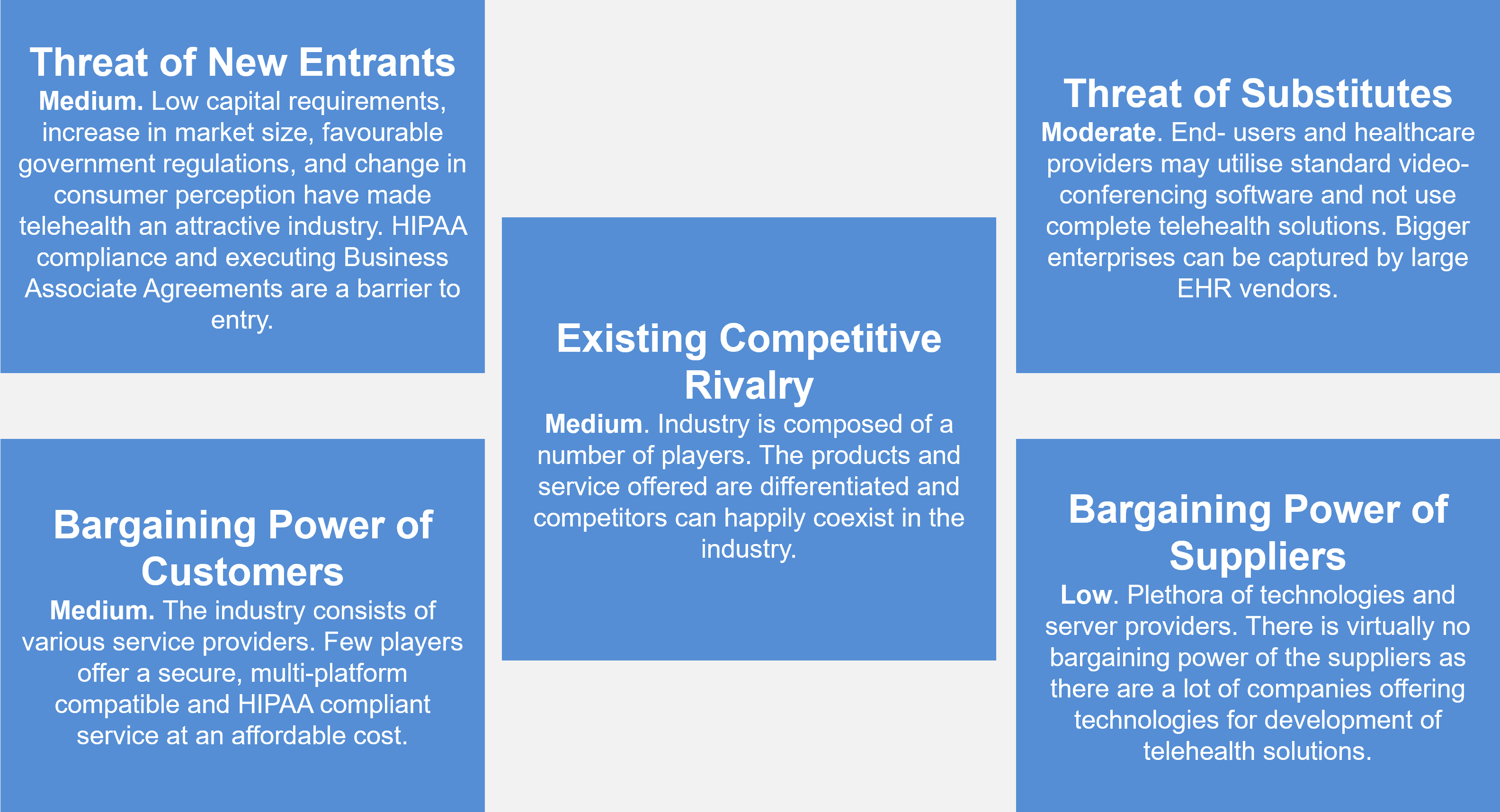U.S. Telehealth Market

Market Size and Growth
U.S. Telehealth Market : Valued at USD 10 billion in 2020, projected to grow to USD 43 billion by 2026 at a CAGR of 28%. 1
Global Telehealth Market : Estimated at USD 60.9 billion in 2020, with an anticipated growth rate of 18.2% CAGR from 2021 to 2027. 2

Key Drivers of Growth
Impact of COVID-19 Pandemic :
- The pandemic significantly accelerated telehealth adoption as consumers and providers sought safer healthcare delivery methods.
- Telehealth usage increased 38 times compared to pre-COVID-19 levels. 3

- During April 2020, telehealth utilization for office visits and outpatient care surged 78 times compared to February 2020. 3
Specialty and End-User Adoption :
- Telehealth claims varied substantially across specialties, with psychiatry experiencing the highest claims.
- Healthcare providers emerged as dominant end-users, utilizing telehealth for disease management and post-acute care programs.

Technological Advancements :
The rise in mobile phone penetration and broadband internet accessibility led to the dominance of web/app-based telehealth platforms.
Key Market Segments
End-User Segment :
Healthcare Providers: Increased adoption among patients and expanded use in disease and post-acute care management.
Mode of Delivery :
Web/App-Based Telehealth: The most prominent delivery method, driven by technological convenience and widespread smartphone usage.
| Trading Comparables | |||||
| (In USD Millions, As on 16th August, 2021) | Enterprise Value (EV) | Revenue (TTM) | EBITDA (TTM) | EV / Revenue | EV / EBITDA |
| Company | |||||
Teladoc Health, Inc. 4 |
23,420 |
1,630 |
-390 |
14.4x |
-60.1x |
American Well Corporation 5 |
1,760 |
241 |
-180 |
7.3x |
-9.8x |
ModivCare Inc.6 |
2,770 |
1,650 |
174 |
1.7x |
15.9x |
1Life Healthcare, Inc. |
3,110 |
465 |
-62 |
6.7x |
-50.1x |
| Median | 7.0x | -30.0x |
Conclusion
The U.S. telehealth market is undergoing rapid growth, driven by the pandemic, technological advancements, and the demand for safe and convenient healthcare options. This evolution has positioned telehealth as a pivotal component of modern healthcare, with promising prospects for continued expansion across diverse specialties and delivery modes.
Porter’s 5 Forces Analysis

Threat of New Entrants – Medium
Low capital requirements, increase in market size, favourable government regulations, and change in consumer perception have made telehealth an attractive industry. HIPAA compliance and executing Business Associate Agreements are a barrier to entry.
Threat of Substitutes - Moderate
End- users and healthcare providers may utilise standard video-conferencing software and not use complete telehealth solutions. Bigger enterprises can be captured by large EHR vendors.
Bargaining Power of Customers – Medium
The industry consists of various service providers. Few players offer a secure, multi-platform compatible and HIPAA compliant service at an affordable cost.
Bargaining Power of Suppliers - Low
Plethora of technologies and server providers. There is virtually no bargaining power of the suppliers as there are a lot of companies offering technologies for development of telehealth solutions.
Existing Competitive Rivalry – Medium
Industry is composed of a number of players. The products and service offered are differentiated and competitors can happily coexist in the industry.
Sources
- U.S. Telehealth Market Size | Research Report | 2021-2026
- Telemedicine Market Share – Growth Report, 2032
- Telehealth: A post-COVID-19 reality? | McKinsey
- Teladoc Health, Inc. (TDOC) Valuation Measures & Financial Statistics
- American Well Corporation (AMWL) Valuation Measures & Financial Statistics
- ModivCare Inc. (MODV) Valuation Measures & Financial Statistics